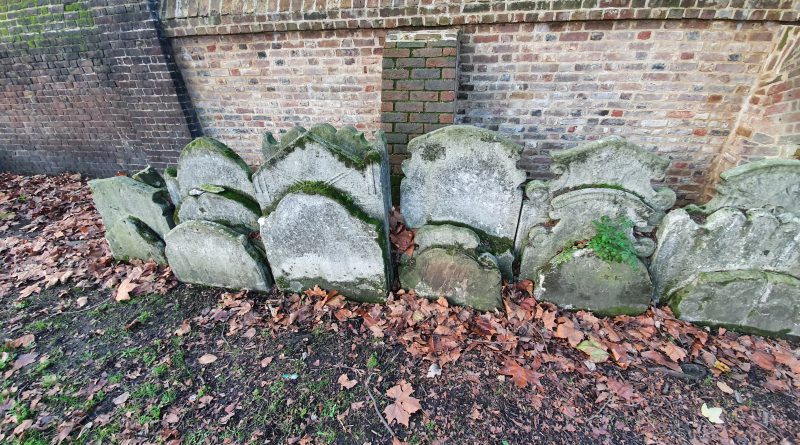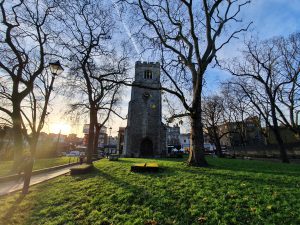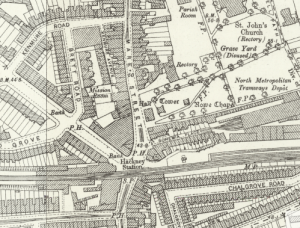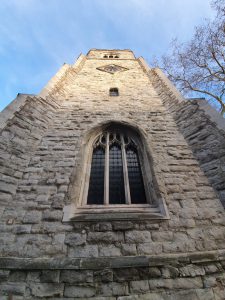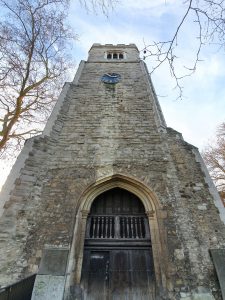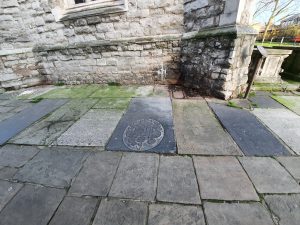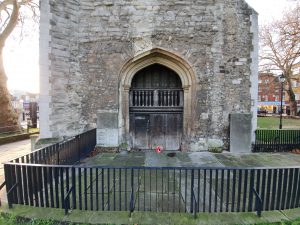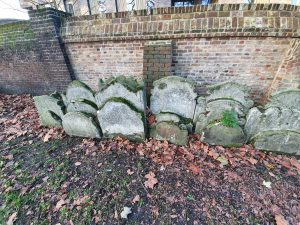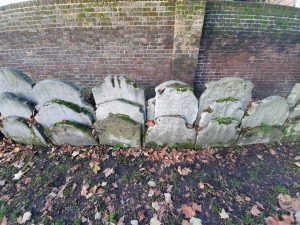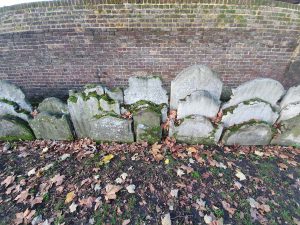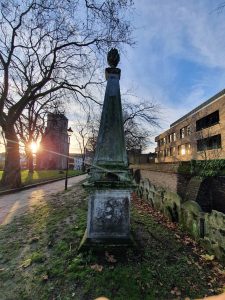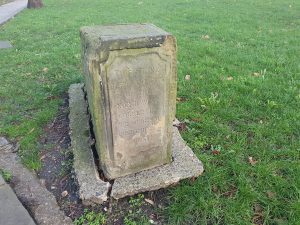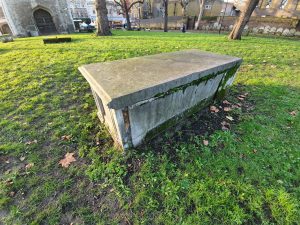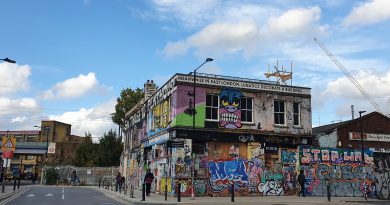London – Hackney (Borough of) – Hackney – St. Augustine’s Church
The tower is all that is left of St. Augustine’s Church in Hackney, which was known as St. John’s Church between 1660 and 1798, the change being a recognition of the former financial involvement of the Knights of St. John. The main part of the building was demolished in 1798, with a larger replacement church being constructed nearby, which is also known as St. John’s. The tower is now the oldest building still standing in Hackney, although the initial intentions were to also demolish this when the new church opened.
The tower is visible in the centre of this map from around 100 years ago, with the new church to the north-east of it.
The former church could hold just 1,000 people and this wasn’t sufficient for the congregation size that wanted to attend. The new building held 2,000 people and was designed by James Spiller, who also designed London’s Great Synagogue which was unfortunately destroyed during the London Blitz.
There wasn’t initially sufficient money to build a tower at the new church, so this part of the old structure was left standing to hold the bells. The new church didn’t receive its tower until 1814, but it was then discovered that the structure wasn’t strong enough to hold the bells, which wasn’t exactly ideal. Finally, in the 1850s, the work was completed to allow the bells to be moved to the new church, and by this time, it was decided to just leave the tower standing at the old church.
Some of these tomb stones are from the seventeenth century and I assume that they have been moved from their former location either in the nave or from within chapels. The nave and chancel of St. Augustine’s Church had been rebuilt by Sir John Heron and Christopher Urswick in 1517 and, other than for some additions to add capacity, not much had changed by the time it was demolished.
Where the nave once met the tower, this is also the meeting point for when tours take place as it’s possible to climb to the top of the tower.
I’m not at all impressed at this little arrangement, where the stones from the graveyard have all been collected up and placed at the side of the park. Although, this may well have had the effect of saving some of the stones from the damage which would have been done through pollution and weathering. I don’t know when this was done, but, at a guess, I suspect it was in 1885 when the public gardens were laid out. It was certainly done by 1908, as the book mentioned in the next paragraph notes that some gravestones were lost and the rest were stacked three abreast around the outside.
As an aside, it’s not just me who complains about the poor treatment of gravestones and nor is this a modern concern. The 1908 ‘The Fascination of London – Hackney and Stoke Newington’ book by GE Mitton noted “it is said in the demolition of the old church the monuments were shamefully treated, and some of the stones were broken up and used for paving purposes”.
One of the memorials in the churchyard.
Stones have been placed to mark where the corners of the old church used to be, this one marks the north-west corner.
One of the tombs in the graveyard. There was actually another survivor from the demolition of the church in the late eighteenth century, which was the Rowe Chapel which had been built in 1614. This was kept as it was privately owned and it was protected and given a new roof. Having noted that, the demolition of the church was clumsy and without much care for heritage, it was noted at the time that the figures on the tombs lost their heads and damaged fragments were just kept in the toolshed. Unfortunately, the structure collapsed in 1877, although the chapel was still kept in situ. It was only in 1896 that the chapel was demolished and the now badly damaged monuments taken to the new church.
Hackney is unfortunate to have lost the church that it did, although at least the remaining tower is Grade I listed. The new church, slightly surprisingly for such an innovative project, was seen by many as quite dull and plain when it opened, and it certainly looks like that internally today. I didn’t find much of interest in terms of the architecture of the new church (I say new, it’s over 200 years old), but the heritage of the former site is fascinating and a number of information boards have been put up around the site.

